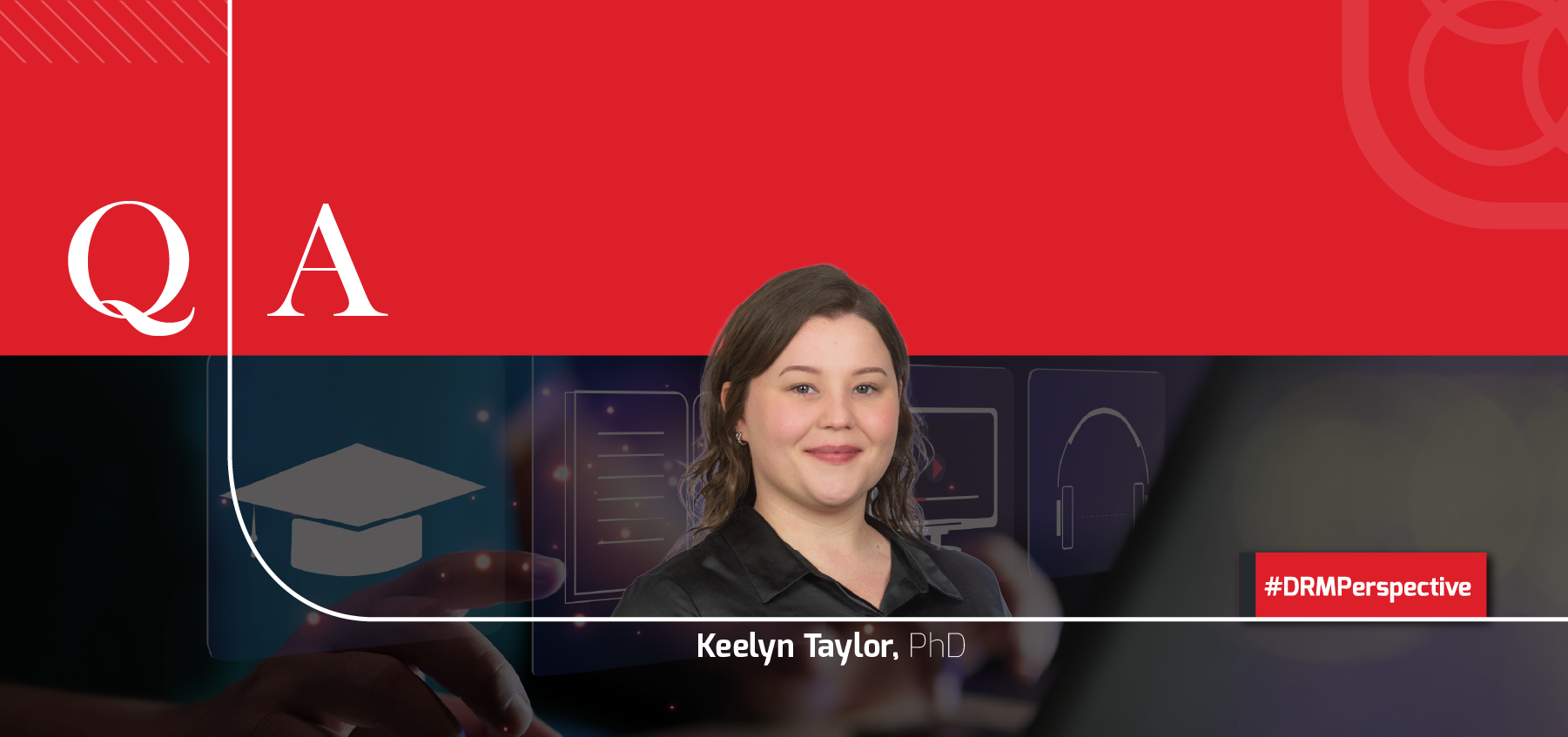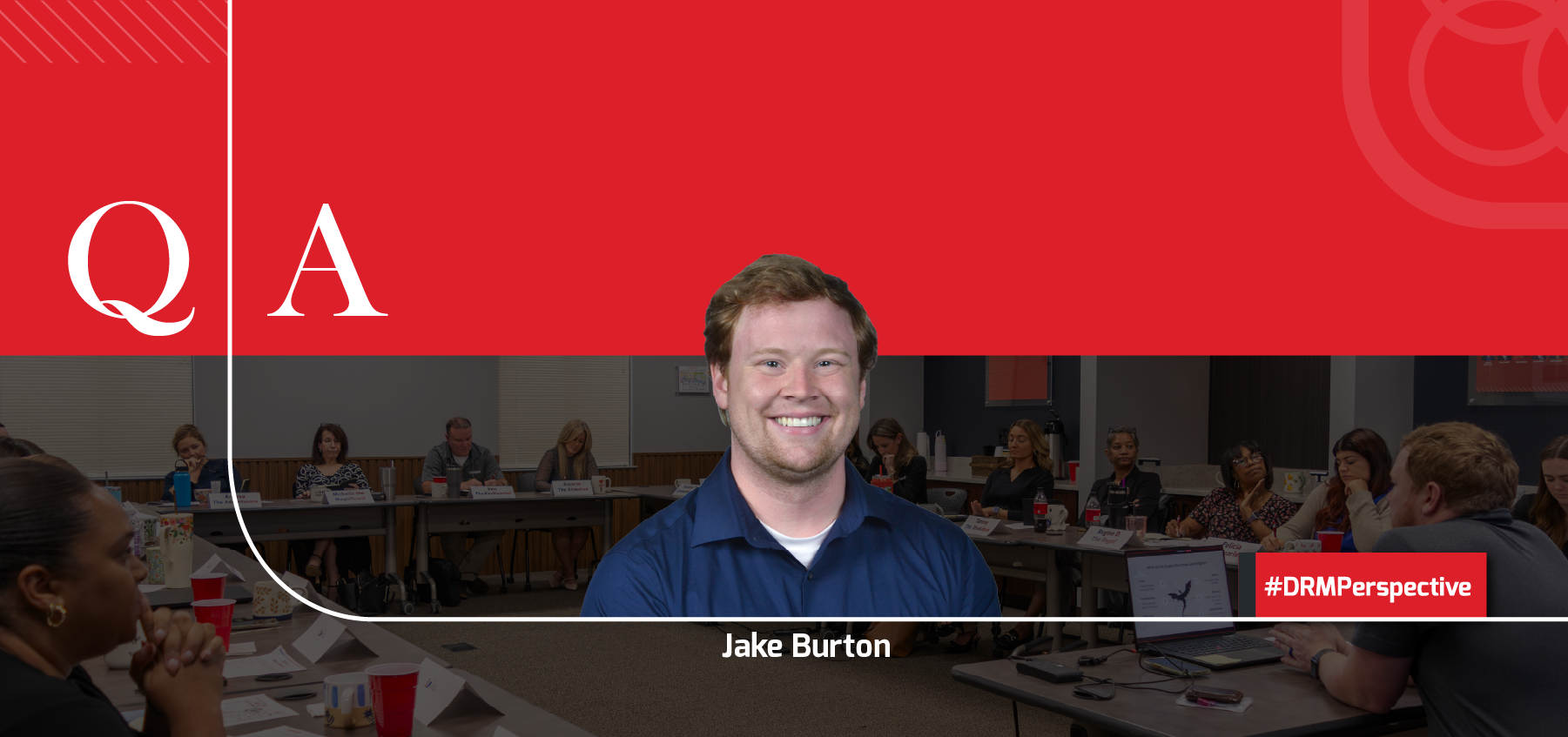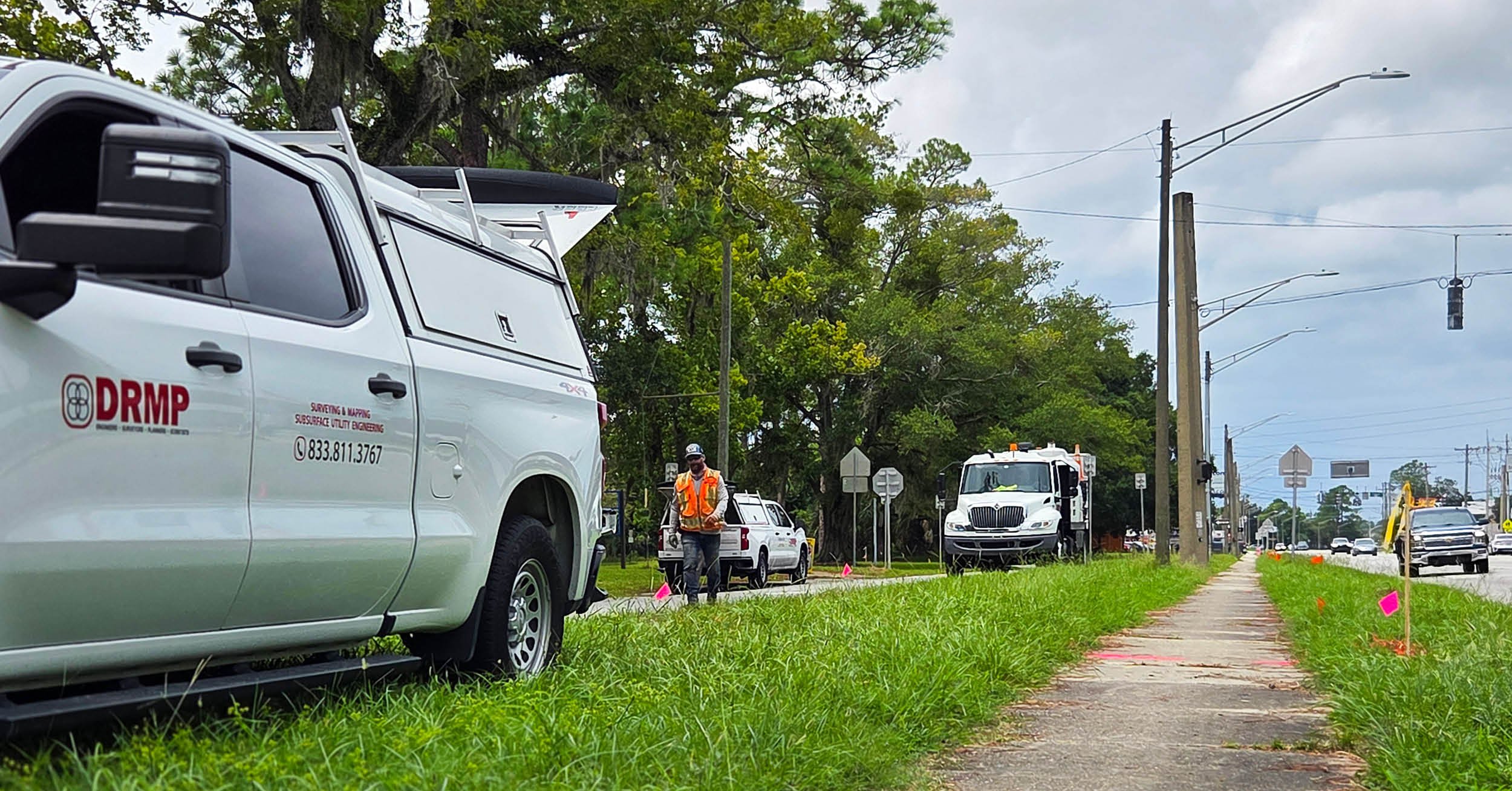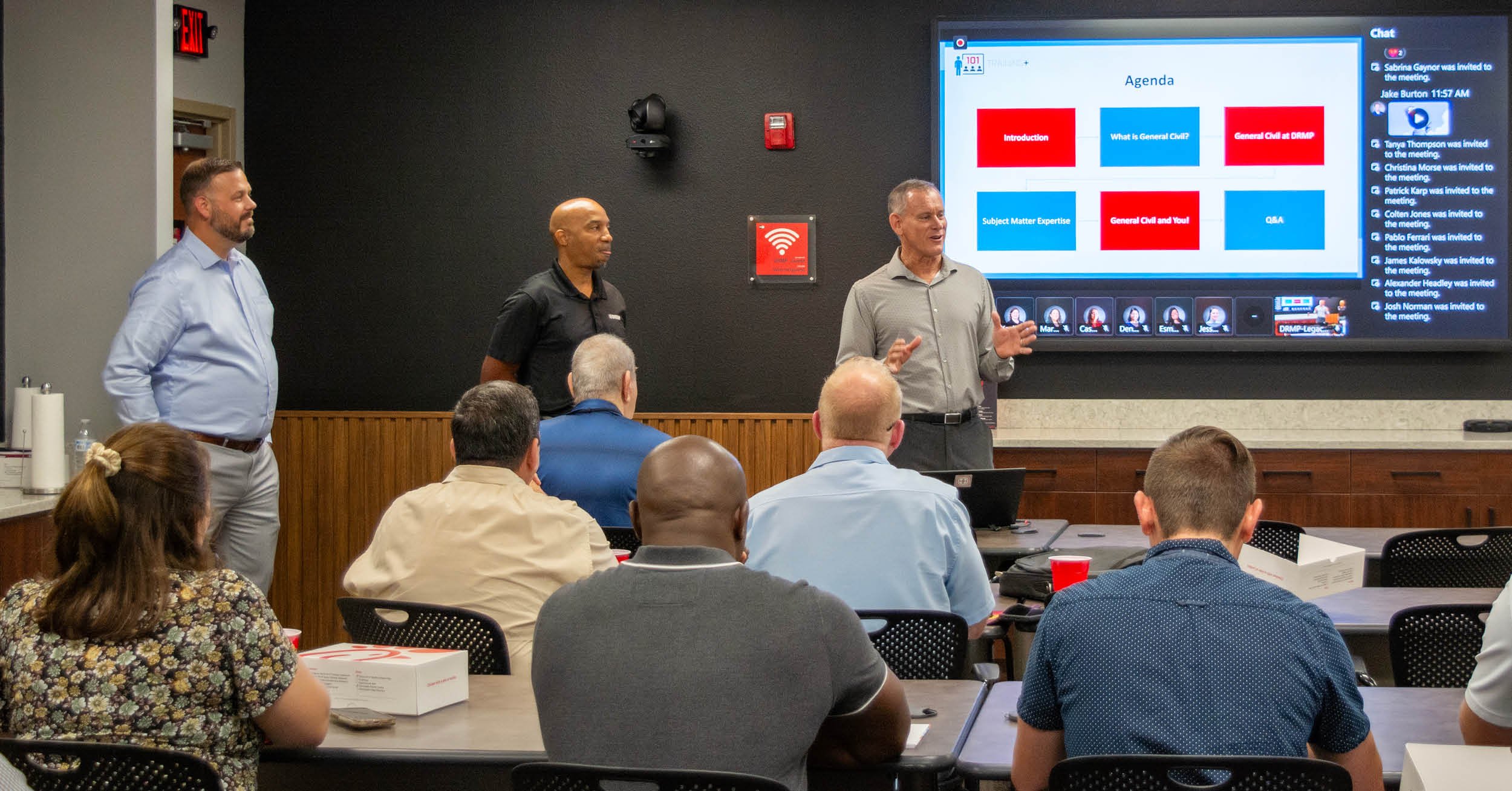Instructional designers are expert translators who turn complex, specialized knowledge into understandable learning experiences that stick.
DRMP Instructional Designer Keelyn Taylor brings this work to life in her role at the firm. With a PhD in sociology, a TEDxUF talk under her belt, and a love of learning, she helps transform subject matter expertise into training that supports employee development, advances career growth, and strengthens team collaboration. Her role falls under DRMP’s Learning and Development (L&D) umbrella, and with October being National Learning and Development Month, it is a fitting time to recognize how her work contributes to building a culture of continuous learning across the firm’s many offices. She combines analytical thinking with creative problem solving, whether she is building out a new learning management system, designing a company-wide training series, or helping engineers share their knowledge more effectively.
In this Q&A, Taylor provides insight into the role of an instructional designer, how it supports employees and clients, and why well-designed learning is beneficial in a technical environment.
Q. What does an instructional designer do?
We typically conduct needs assessments, design curriculum, develop learning materials, and build assessment tools to measure learning outcomes and evaluate programs. Throughout this process, we collaborate closely with subject matter experts (SMEs).
Why would a civil engineering firm, such as DRMP need an instructional designer?
An engineering firm, such as DRMP, would benefit from an instructional designer because technical expertise alone doesn’t make someone an expert educator. An instructional designer like me helps translate complex concepts into clear, engaging learning experiences or training materials. An instructional designer helps ensure employees can effectively understand and apply knowledge or skills that have the potential to help improve performance, retention, and professional development across a firm. Good instructional design helps employees learn more effectively, apply knowledge on the job, and grow professionally. For a company like DRMP, it can boost efficiency, engagement, and overall team performance.
How does your role indirectly benefit DRMP's clients?
By improving the way employees learn and apply critical information, my role as an instructional designer indirectly supports higher-quality project outcomes for DRMP’s clients. When staff is better trained, whether in technical skills, project management, compliance, or safety, their work is more efficient, accurate, and aligned with best practices. This leads to smoother project execution, fewer errors, and ultimately, stronger client satisfaction. In short, effective internal learning results in external excellence.
You have an impressive educational background, including a PhD and a TEDxUF talk. Could you tell us more about these experiences?
I consider myself a lifelong learner. I truly believe in the power of learning. I earned my PhD in sociology at the University of Florida (UF), where I also taught courses and worked as a teaching assistant. My PhD program and time at UF gave me the opportunity to combine my love of research with teaching. I found it especially rewarding to help students think critically about the social world around them.
As for my TEDxUF talk, that was a dream come true. Growing up, I used to joke that one of my life goals was to give a TED Talk, since watching them was practically a hobby of mine. In 2023, I discovered that UF hosts an annual TEDx conference and applied to be a speaker, despite the idea of it making me incredibly nervous. I was honored to be selected and giving that talk is one of the proudest moments of my career so far. I’m grateful that I had the opportunity to speak about a topic I’m deeply passionate about, and if my talk inspired even just one person to think more critically and sociologically, I consider it a success.
How does your academic background influence your work at DRMP?
I would argue that my academic background influences everything I do. Studying sociology and working in academia is a bit like opening Pandora’s box. You can never close it. I think I will always approach problem solving like an academic. At DRMP, this shows up in several ways. I think critically and analytically, explore alternative approaches, pay close attention to detail, and continuously look for ways to improve and challenge L&D.
What kinds of projects do you typically work on at DRMP?
One of the best parts of my job at DRMP is the variety of projects I get to work on. Some of my favorite projects this year have been assisting subject matter experts through our 101 training series, which educates employes on DRMP’s various disciplines, managing DRMP’s learning management system, and hosting DRMP’s Book Club.
Can you describe a recent project you’re proud of?
A recent project I’m proud of is the upcoming launch of L&D’s new learning management system called Nexus. With Nexus, resources and training will be easy to access, simple to navigate, and fit into everyone’s daily workflow. DRMP L&D Specialist Jake Burton and I have been working hard preparing Nexus, and we were so excited for its launch on Oct. 1.
How do you collaborate with engineers or other subject matter experts?
Collaboration with subject matter experts typically begins with a needs analysis to determine the learning objectives. From there, we agree on the most appropriate learning modality and begin developing materials together. Once the content is created, we conduct a run-through and review everything to ensure accuracy and alignment with objectives. I provide feedback during this stage to refine the materials. Finally, we implement or deliver the training and assess how effectively it met the intended learning objectives.
How do you approach making complex technical information easier to understand?
Ironically, not being an expert in the technical areas at DRMP has been an advantage for me as an instructional designer. It allows me to see things from the perspective of someone learning the material for the first time. I rely heavily on the phrase “Can you explain that to me like I am a 5th grader?” Jokes aside, I typically approach making complex information easier to understand by identifying the key concepts learners need to grasp, working closely with subject matter experts to break content into manageable chunks, prioritizing clear and simple language, and incorporating visual aids, examples, and analogies to make abstract ideas tangible.
What skills or tools do you rely on most in your role?
I spend a lot of time in PowerPoint and Camtasia creating presentations and instructional videos. I would say that curiosity, communication skills, and collaboration skills are essential in my role.
What's the biggest misconception people have about instructional design?
I would say that folks think instructional design is the same as graphic design. While I often collaborate closely with DRMP’s graphic designers, instructional design and graphic design are different skill sets. Instructional design focuses on how people learn and how to structure content for effective learning, while graphic design centers on visual aesthetics and communication through imagery and layout..
What excites you most about working in this space, especially at an engineering firm?
What excites me most about working at DRMP is the well of technical knowledge here. My role gives me the ultimate opportunity to learn from our incredible experts, and you may not believe this, but I love to learn.
What's one thing you wish more people at DRMP knew about your role?
Instructional design is a critical part of how L&D delivers value. The work Jake and I do is closely connected. Together, we create learning experiences that are strategic, effective, and complementary..
Keelyn Taylor PhD, serves as an Instructional Designer for DRMP's Learning and Development Department.

















